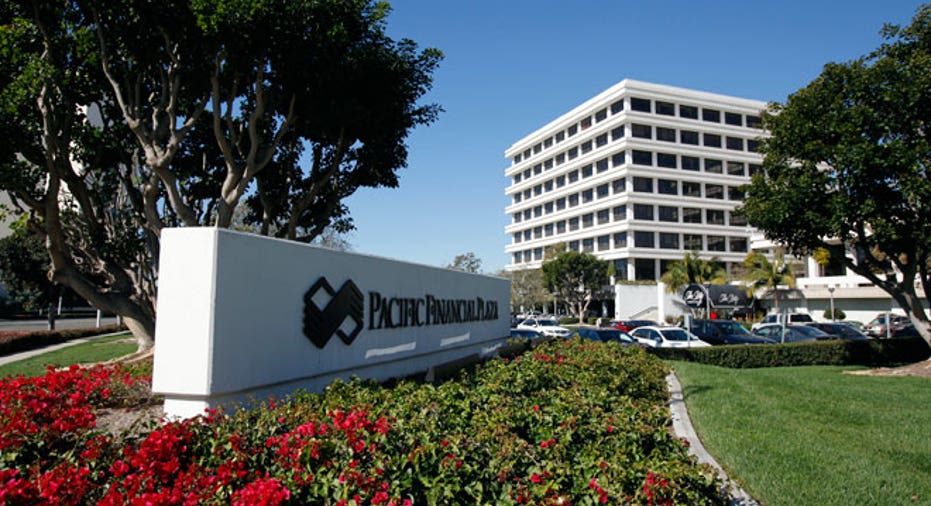Pimco's Gross: Irrational Exuberance, the Sequel

Pimco’s Bill Gross says investors who believe double-digit market returns will continue are irrationally exuberant and warns they better lower expectations on all asset classes.
Gross again takes characteristically pointed jabs at the Federal Reserve’s easy money policies in his latest investment letter.
PIMCO’s Gross warns investors that, on a scale of one to ten, markets are now a six for “asset price irrationality," which is “moving in an upward direction,” as the markets are in shouting distance of record highs set in October 2007.
“Corporate credit and high yield bonds are somewhat exuberantly and irrationally priced,” he wrote: “Spreads are tight, corporate profit margins are at record peaks with room to fall, and the economy is still fragile.” But Gross suggests staying invested while expecting lower, single-digit returns.
In an attempt to rejuvenate a moribund U.S. economy growing at just 2% or less annually, the Federal Reserve has been keeping interest rates at historic lows, with $85 billion in monthly purchases of Treasuries and mortgage-backed securities.
That manipulation has juiced the markets, Gross says. “Investors bought over $100 billion of high yield and levered loan paper last year, a record level even exceeding the ominous levels in 2006 and 2007,” Gross says. At the same time, investors poured $33 billion into junk-bond mutual funds and exchange-traded funds, up 55% versus 2011, says Morningstar Inc.
Gross points out that Fed Governor Jeremy Stein reiterated recently former Federal Reserve Chairman Alan Greenspan’s famous “irrational exuberance” speech made in December 1996 before the dotcom bubble burst. Stein says he now essentially sees irrational exuberance in the high-yield corporate bond market, with a fairly significant pattern spotted of reaching-for-yield.
And Gross points out, using analysis from Bianco Research, that high-yield bonds, stock prices and other risk spreads are moving in relative lockstep with each other—meaning, equity markets are also likely in frothy territory.
Gross asks: “If the Fed’s so smart, why are some of us still poor? Why did our 401(k)s become 201(k)s in 2009 before recovering to near peak levels currently? If they’re so smart, why the roller coaster ride, the 30% decline in home prices since 2006, and our current 7.9% unemployment rate?”
The central bank’s mandate has long since morphed from monitoring inflation and unemployment, to repairing the banks and helping homeowners and lifting 401(k)s and auto sales, central-bank stage-managed inflation for clunkers. Alan Greenspan’s ‘irrational exuberance’ comment was made at the quaint time when the central bank was only concerned about inflation and economic growth.
Meanwhile, U.S. banks reported accounting gains of $141.3 billion in 2012, the highest since 2006, housing is mending, so are auto sales. So, why the fabricated 6.5% jobless rate for when the Fed raises rates and/or leaves the markets, which may not happen next year, the year after, or even in 2016?
However, Fed chairman Ben Bernanke defended the Fed’s easy money policy this week before Congress, even though he did acknowledge what Fed Governor Stein now warns about, the reach for yield:
“Another potential cost that the Committee takes very seriously is the possibility that very low interest rates, if maintained for a considerable time, could impair financial stability,” Bernanke testified. “For example, portfolio managers dissatisfied with low returns may ‘reach for yield’ by taking on more credit risk, duration risk, or leverage.”
But the chairman then quickly said: “On the other hand, some risk-taking -- such as when an entrepreneur takes out a loan to start a new business or an existing firm expands capacity -- is a necessary element of a healthy economic recovery.”
Given there are few lonesome doves on the Fed, keep in mind what Fed vice chair Janet Yellen said in a 2010 speech in Denver: “Will future regulators and monetary policymakers be accused of bursting 10 of the past 2 asset bubbles?..These dangers are real. But the events we’ve recently lived through make it clear that we have no choice but to embark on this road…Our task now is to implement intelligent policies to contain future bubbles and credit binges, and to make sure that those that do occur inflict a lot less damage on the economy. Next time I hope we can say, 'We did see it coming, and we did something about it.'”
Mark those words.
The U.S. economy has seen not just one, not three, but five bubbles dating back to the late ‘80s—the S&L thrift lending mania, the 1998 Asian Crisis, the dot-com bubble of 2000, the housing bubble and the credit bubble of the mid-2000s. All of Washington D.C. is still living in bubble-land, yearning for the revenue from the bubble glory days, which is why the country has a $16 trillion deficit.
Consider this: chairman Greenspan never answered his own question about whether the markets were in an irrational exuberant phase in his 1996 speech, Gross points out. The Fed’s incorrect stance at the time, he says: “Asset price exuberance was an indirect and much less significant influence on economic growth.”
We saw how that turned out with the housing crackup. Remember what Bernanke said in December 2009 when asked if he in retrospect would have changed Fed policy before the near-meltdown of the financial system.
"There were mistakes made all around," Bernanke said.



















